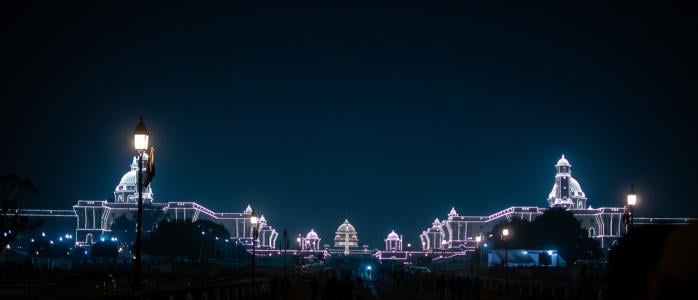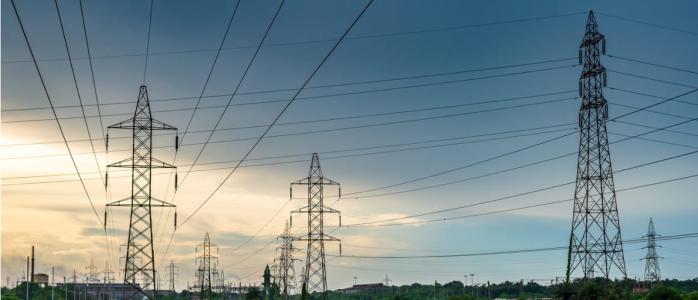



Indian discoms have been staring down the barrel for a couple of decades now and Covid-19 may be the trigger that puts them out of their misery. Their operational and financial status will be in shambles in the months ahead, for the reasons stated in Part 1 and Part 2 of the series. Acknowledging the gravity of the situation, the Union Power Ministry has announced a three-month moratorium on payments to generators (except renewable energy producers) and is planning to infuse liquidity into discoms (deja vu ?). This is akin to ventilator support for the high-profile Covid-19 patient. Ultimately, the body’s immunity will have to step up to fight this from within to survive. The current crisis has brought home the importance of addressing the legacy issues afflicting the health of India’s power sector and only if these are addressed can they truly avoid the death spiral.
We examine three issues that have been persistent and have fundamentally been dragging discoms down, despite multiple efforts to resuscitate them.
Delays in filing tariff petitions and releasing tariff order
Innocuous as it might seem, in a regulated sector, timely filing has implications for how soon costs can be recovered and the extent to which they will have to look for sources (borrowing at high cost) to sustain operations. State tariff regulations mandate that discoms are to file tariff petitions (for revising power tariff schedules) by November each year. For example, by November 2019, the tariff petitions for FY 2020-21 should have been filled, based on which the tariff order for 2020-21 should have been released by March 2020.
However, most discoms have repeatedly failed in filing petitions in a timely manner for several reasons, including state government interventions or a lack of preparedness at their ends. As of April 2, 2020, only seven states1 have got their tariffs approved by the regulator. Given the current lockdown, the remaining discoms will be forced to operate at older tariff schedules, while incurring higher costs. This will adversely affect their cash flow, reinforcing the need for extra borrowing to manage working capital requirements.
Mismatch between cost and revenue structures
Power purchase is the biggest expense item in a discom’s books. For power purchased from generating stations (thermal power in particular), discoms pay the cost in two parts – fixed cost (based on declared capacity) and variable or energy cost (based on electricity drawn). Besides, there are other cost heads that pertain to operation and maintenance of the distribution network. It is logical then that the revenue recovery from consumers also has two parts - fixed charge and energy charge. In the tariff determination process, the costs and revenues (including the subsidies) are balanced out but they are structured differently. There is no accepted rule on what is an optimal tariff design but they must be cost reflective and allow for price signals to consumers - both for efficiency and demand response.
Notwithstanding the underlying principles, in India, most of the power is procured on long-term contracts with a significant fixed cost. There are significant seasonal variations in demand and delays in the process of recovering revenues from consumers. For these reasons, and until there is a transition to a bulk procurement process that relies more on an efficient market, fixed cost (FC) liabilities must be aligned with the fixed revenue (FR) recovered from consumers. This is not the case across various states (Figure 1). For instance, in Maharashtra, fixed costs comprise 55 per cent of total power costs, but discoms recover only 15 per cent revenue through fixed charges, thereby, relying heavily on energy charges.
In the current scenario, the skewed revenue structure is disadvantageous to the discoms as demand from commercial and industrial (C&I) consumers (high paying consumers) is at a historic low. Further, discoms have been asked to waive off fixed charges for industrial consumers, given the force majeure and ensuing restrictions, that have kept facilities shut. On the other hand, discoms have not been able to use the force majeure clause to extricate themselves from their fixed cost obligations to generators. A double-whammy could not have come at a worse time!
Lack of cost reflective tariffs and distorted cross-subsidies
The first principle of tariff design calls for cost-reflective tariffs. This is clear and simple in intent but the implementation across India has been shoddy at best. Most discoms across the country have a crude metric called the average cost of supply (ACoS) that represents the per unit cost of electricity when it is equally attributed to every unit of energy supplied. While a unit of electricity supplied to any consumer is invariant, the cost incurred varies vastly. High voltage consumers inherently rely less on the distribution infrastructure to access power and have the necessary electronics on their premises to handle power at high voltages. Further down the voltage levels, more transformation is needed, which inherently results in more losses. As a result, costs telescopically increase with lower voltage levels. Only a few regulators mandate that these costs specific to each consumer type (based on the voltage level and other considerations), be clearly established and tariffs be based on them. Instead, costs are uniformly averaged and tariffs are then designed to recover these from consumers. This already makes electricity tariffs for productive use in industry and large commercial setups higher.
They then take a turn for the worse. The current regulations and regulators explicitly acknowledge and permit further cross-subsidisation across categories. Domestic (household) and agriculture (D&A) consumers across the country do not pay a tariff that even covers this distorted average cost. They are given a significant discount on the average cost and their average billed rates (ABR) per unit are only in the range of 34 per cent to 84 per cent of the ACoS (in case of Uttar Pradesh). To make up for losses in supplying electricity to D&A consumers , C&I consumers are charged higher tariffs.
To bring a semblance of parity to these distorted prices, the National Tariff Policy (NTP) 2016 prescribes a gradual reduction in cross-subsidy, suggesting that the average revenue realisation (ARR) for all categories be within +/- 20 per cent range of a discom’s ACoS. Few states such as Gujarat and Bihar have undertaken tariff rationalisation, but most others still have skewed tariff structures (see Figure 2).
The power demand has dropped by 28 per cent - and mostly from C&I consumers. States that are yet to rationalise their tariff structures and have a high share of demand from D&A consumers, would be severely affected by the sudden drop in demand from C&I consumers.
In Table 1, we estimate the net revenue impacts for discoms in Bihar and Uttar Pradesh under business as usual (BAU) and lockdown scenarios. We have assumed a 90 per cent fall in demand for C&I consumers and 50 per cent fall for railways, under lockdown. As per estimates, discoms in UP and Bihar would incur a revenue drop of approximately 38 percent and 31 percent respectively.
| Consumer Category | Uttar Pradesh | Bihar | ||||||
| ABR (INR/kWh) | Sales share | Drop in Revenue (%) | ABR (INR/kWh) | Sales share | Drop in Revenue (%) | |||
| BAU (%) | Lockdown (%) | BAU (%) | Lockdown (%) | |||||
| Domestic | 5.95 | 55.49 | 76.34 | 37.61 | 6.61 | 67.03 | 90.63 | 30.99 |
| Agricultural | 2.50 | 14.16 | 19.48 | 6.60 | 4.03 | 5.46 | ||
| Industrial | 7.83 | 20.98 | 2.89 | 8.53 | 17.40 | 2.35 | ||
| Commercial | 10.47 | 9.16 | 1.26 | 8.44 | 8.78 | 1.19 | ||
| Railways | 11.67 | 0.21 | 0.03 | 8.72 | 2.76 | 0.37 | ||
Source: Authors' analysis of SERC's Tariff Orders for FY 2019-20
Getting the building blocks right
Our discoms are in the too big to die (or be allowed to die) category. We must solve to not sustain this Frankenstein but to infuse new life with new wiring into India’s power sector. Any short-term relief package to emerge from this crisis must be linked to the discoms’ commitment to carrying out some crucial changes to their BAU operations and governance. We recommend:
Prateek Aggarwal is a Programme Associate, Karthik Ganesan is a Research Fellow and A R Vishnuvardhan is a Power Sector Consultant at The Council.
Read Part 1: Unpacking India’s Falling Electricity Demand During the LockdownRead Part 2: Solving for Billing and Revenue Collection Challenges
1Andhra Pradesh, Assam, Bihar, Gujarat, Maharashtra, Meghalaya, and Sikkim.






Add new comment